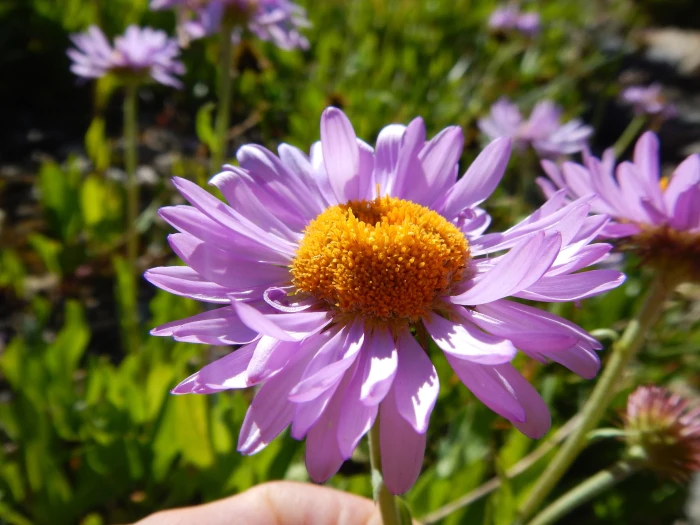Wandering Fleabane
(Erigeron peregrinus)
Wandering Fleabane (Erigeron peregrinus)
/
/

© Matt Lavin
CC BY 4.0
Image By:
© Matt Lavin
Recorded By:
Copyright:
CC BY 4.0
Copyright Notice:
Photo by: © Matt Lavin | License Type: CC BY 4.0 | License URL: http://creativecommons.org/licenses/by/4.0/ | Uploader: mattlavin | Publisher: iNaturalist |

























Estimated Native Range
Climate Requirements for Grand Junction, Colorado
| This Plant | Your Site | Plant Suitability for Your Location | ||
|---|---|---|---|---|
| • Precipitation | 7" - 219" | 9" | Your precipitation may be insufficient for this plant. Irrigate N" / year. | Irrigate N" / year |
| • High Temp. | 40°F - 91°F | 94°F | Your summers may be too hot for this plant. | Too hot |
| • Low Temp. | -12°F - 38°F | 17°F | Your winter temperatures are normal for this plant | Excellent |
This plant should grow well at your location with about N inches per year (Y minutes per month) of irrigation.
Summary
Erigeron peregrinus, commonly known as Wandering Fleabane, is a perennial herb that is native to moist mountain meadows, stream banks, and bogs in the northwestern regions of North America, including Alaska, British Columbia, Washington, and Oregon. This plant typically grows up to 28 inches (71 cm) in height and spreads vegetatively through underground rhizomes. Wandering Fleabane has a basal rosette of leaves that can range from hairless to hairy, and it produces a single flower head per stem. The flower head consists of 30-80 ray florets that can be blue, purple, pink, or white, blooming from late spring to early fall. The flowers are modest in size but can be quite showy when in large numbers.
Wandering Fleabane is valued for its ability to adapt to wet environments and for its attractive flowers, which can add a splash of color to native plant gardens, rain gardens, and restoration projects. It is also used in borders and wildflower gardens. This plant prefers consistently moist soil with good drainage and can tolerate a range of light conditions from full sun to part shade. While generally low-maintenance, it can be susceptible to powdery mildew and rust, especially in crowded or poorly ventilated conditions. It is not known for being invasive and does not typically present problems with aggressive roots or other cultivation issues.CC BY-SA 4.0
Wandering Fleabane is valued for its ability to adapt to wet environments and for its attractive flowers, which can add a splash of color to native plant gardens, rain gardens, and restoration projects. It is also used in borders and wildflower gardens. This plant prefers consistently moist soil with good drainage and can tolerate a range of light conditions from full sun to part shade. While generally low-maintenance, it can be susceptible to powdery mildew and rust, especially in crowded or poorly ventilated conditions. It is not known for being invasive and does not typically present problems with aggressive roots or other cultivation issues.CC BY-SA 4.0
Plant Description
- Plant Type: Herb
- Height: 1-2 feet
- Width: 1-2 feet
- Growth Rate: Moderate
- Flower Color: Blue, Pink, White
- Flowering Season: Spring, Summer
- Leaf Retention: Deciduous
Growth Requirements
- Sun: Full Sun, Part Shade
- Water: Medium
- Drainage: Fast, Medium
Common Uses
Border Plant, Butterfly Garden, Groundcover, Low Maintenance, Rock Garden
Natural Habitat
Moist mountain meadows, stream banks, and bogs in northwestern North America
Other Names
Common Names: Subalpine Daisy, Subalpine Fleabane, Wandering Daisy, Peregrine Fleabane, Fleabane
Scientific Names: Erigeron peregrinus, Aster peregrinus, Aster salsuginosus, Aster tilesii, Erigeron angustifolius, Erigeron hesperocallis, Erigeron membranaceus, Erigeron peregrinus f. dentatus, Erigeron peregrinus f. membranaceus
GBIF Accepted Name: Erigeron peregrinus